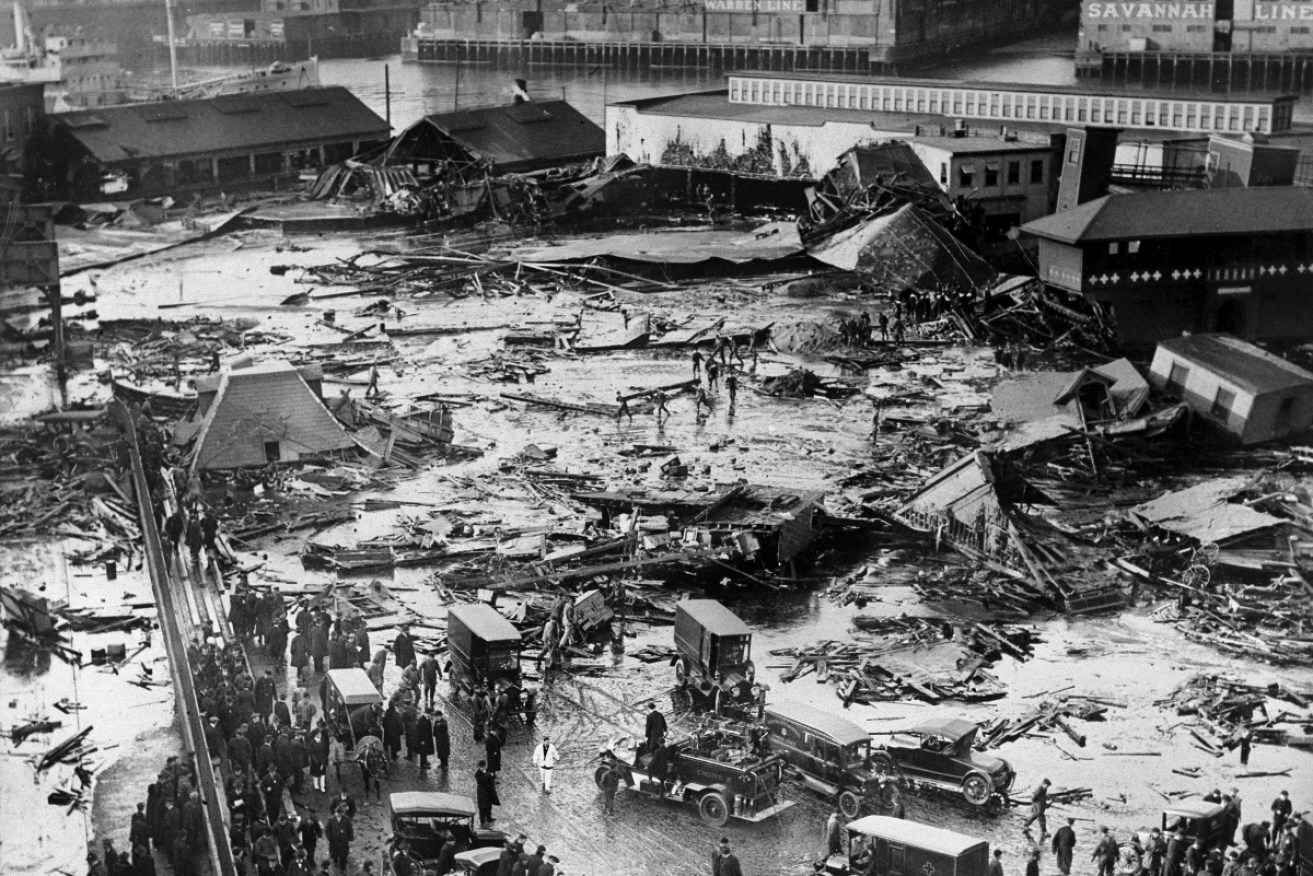Sweet but deadly Great Molasses Flood of 1919 finally explained

Harvard University researchers say they've solved the mystery behind the disaster that killed 21 people. Photo: AP
The Great Molasses Flood of 1919 – one of Boston’s most peculiar disasters – killed 21 people, injured 150 others and flattened buildings when a giant storage tank ruptured.
Now Harvard University researchers think they know why the wave of sticky stuff claimed so many lives: a winter chill rapidly cooled the molasses as it streamed through the streets, complicating rescuers’ efforts to free victims.
Experts who studied the disaster concluded that cold temperatures quickly thickened the syrupy mess, which might have claimed few if any lives had it occurred in spring, summer or autumn.

Coverage of the disaster in The Boston Post.
Team leader Nicole Sharp said she hoped the findings – presented last week at a conference of the American Physical Society – would shed new light “on the physics of a fascinating and surreal historical event”.
“I’m originally from Arkansas, where we have an old expression: ‘Slow as molasses in January’,” she said.
“Oddly enough, that’s exactly what we’re dealing with here, except that this molasses wasn’t slow.”
On January 15, 1919, shortly after 12.40pm, the massive tank in Boston’s crowded North End buckled and gave way, releasing more than 8.7 million litres of molasses in a wave that accounts indicate was initially almost 8m tall.
Sharp says the sticky tsunami raced through the cobblestone streets at 16km/h, propelled by the sheer weight of the goop.
It did not take long for it to engulf the area around a major street, reduce buildings to rubble and damage an elevated train.
Sharp’s team combed through hundreds of pages of historical accounts, century-old maps and archived National Weather Service data.
Harvard graduate student Jordan Kennedy analysed the properties of blackstrap molasses and how it flowed at different temperatures.
The team found molasses thickened dramatically when exposed to cold, and at the time of the collapse, the stuff in the storage tank likely was considerably warmer than the wintry air outside.
Two days before the disaster, the tank had been topped off with molasses from the balmy Caribbean that had not yet cooled to Boston winter temperatures.
Once the tank split and the molasses gushed across the waterfront, it cooled rapidly, “complicating attempts to rescue victims”, the team says in its report.
Mapping the physics of the molasses flood could help experts better understand other catastrophes such as industrial spills or ruptured levees, Sharp said.








